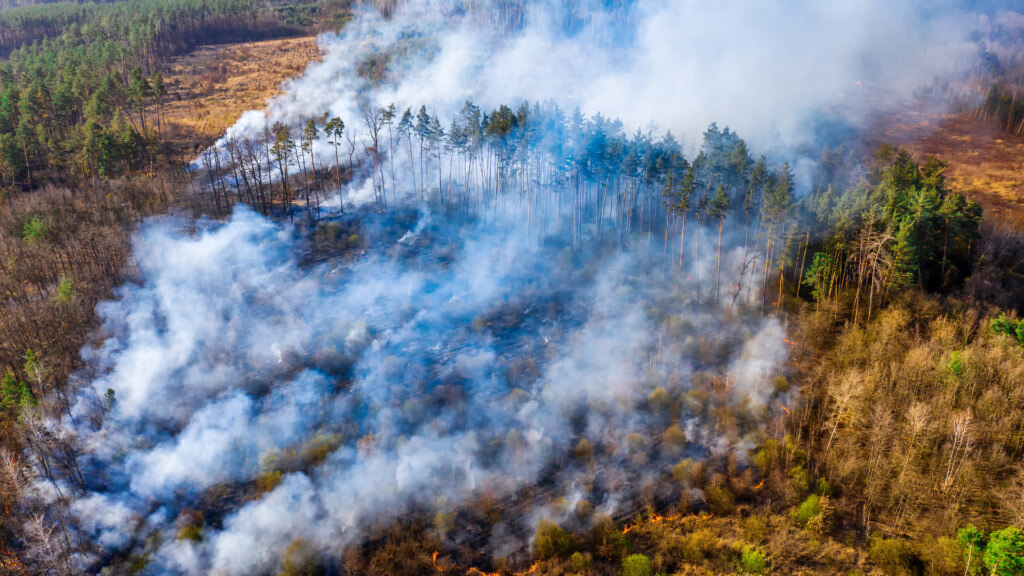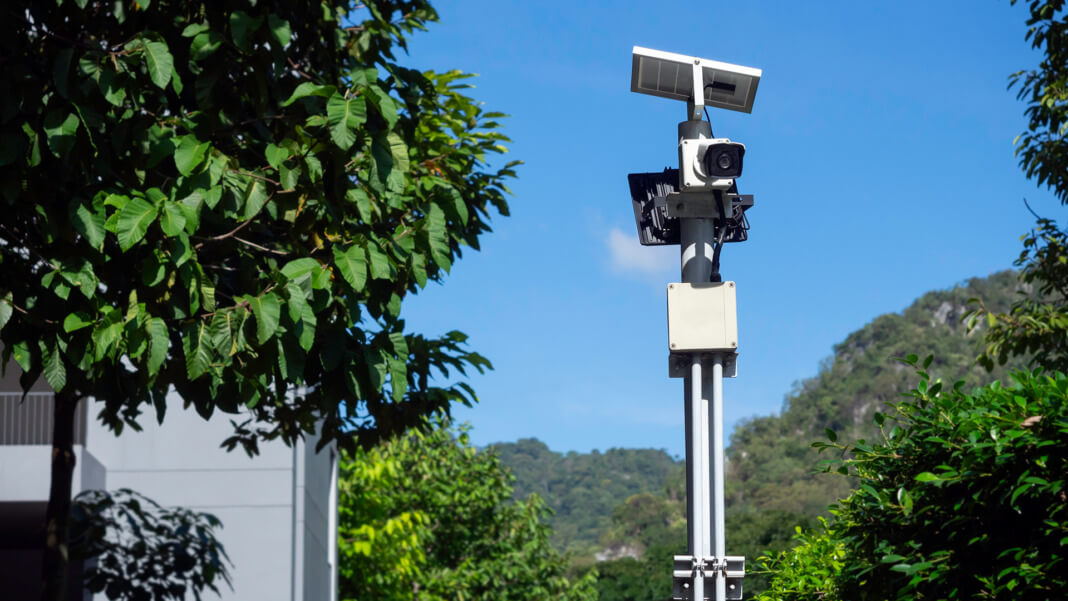In today’s rapidly changing technological environment, artificial intelligence (AI) is a transformative force, reshaping industries and altering societal norms. Many of us recognise AI’s magic touch significantly when it enhances our daily photos taken by our smartphones. But there’s a broader story unfolding: the entry of AI cameras into public and private surveillance, coupled with their potential to monitor nature and protect our environment.
Peeling back the curtain on Australia’s innovative bushfire camera network offers a glimpse into the profound implications of these AI-powered devices. Yet, as we embrace their prowess, we face ethical dilemmas. Let’s journey through the intriguing world of AI cameras, their expanding role in nature surveillance, and the questions they raise.
The expanding realm of AI cameras
AI cameras offer more than just clearer images as they become increasingly prevalent. They’re versatile, adapting to different environments, situations, and needs. Their ability to discern patterns and adjust to scenarios in real-time is particularly striking. The applications for AI cameras span from personal photography enhancements, like edge detection, to critical roles in smart homes and city surveillance. The robust growth projections, with the global market potentially reaching US$23.3 billion by 2028, underscore the mounting interest and trust in these devices.
However, with great power comes great responsibility. Their extensive capabilities also pave the way for potential misuse, especially concerning surveillance and possible breaches of personal privacy. A heavy reliance on AI might also diminish the importance of human intuition and skill, particularly in photography.
The delicate balance of surveillance
The advent of AI cameras in the world of surveillance is undeniably transformative. Across the globe, nations like China and Iran are rapidly harnessing the immense potential of these devices. These cameras, equipped with intricate algorithms, cast their digital gaze over urban landscapes, ensuring that no activity escapes their purview. In places like these, the Big Brother phenomenon is no longer just literary fiction; it’s a palpable reality. Citizens oscillate between the comfort of heightened security and the unease of perpetual observation.
France, on the other hand, provides an intriguing counter-narrative. Here, the journey into AI-enhanced surveillance is treaded with caution. French authorities grapple with ensuring public safety while preserving the cherished ideals of liberty, equality, and fraternity. It’s a precarious act, harmonising the nation’s legacy of upholding human rights with the undeniable benefits that AI-driven surveillance systems bring.
The perks of these advanced surveillance systems are numerous. At their core, they promise a safer public realm. With real-time analysis, these cameras can identify suspicious activities or potential threats, enabling swift action. It’s not just about crime prevention; these systems have been instrumental in streamlining traffic flow, reducing congestion, and enhancing productivity in various industries. For instance, manufacturing units can use AI to monitor assembly lines, spot defects or issues before they escalate. It represents a world where efficiency and safety go hand in hand.
However, this shiny facade is not without its blemishes. At the heart of the debate is the issue of privacy. In our eagerness to build a safer world, we may end up sacrificing the freedoms we seek to protect. Governments, with the best intentions, could morph into Orwellian entities, where every action, no matter how mundane, is subject to scrutiny. The repercussions of such a scenario are profound, ranging from stifled free speech to a general sense of distrust among the citizenry.
Recent history offers cautionary tales. Major events, like the Olympic Games, often serve as launchpads for enhanced security measures. While these are introduced as temporary provisions, the legacy they leave behind is lasting. Surveillance infrastructure, once established, is seldom rolled back. Instead, it often becomes entrenched, normalised, and sometimes even expanded.
In navigating the future of surveillance, the challenge is clear: how do we embrace the undeniable benefits of AI cameras while ensuring that they don’t become instruments of oppression? The balance is delicate, and the stakes are incredibly high.
Guardians of nature: AI’s role in bushfire detection

The Australian landscape, marked by its rugged terrains and vast bushlands, is a beacon of natural beauty and a tinderbox for bushfires. These fires’ increasing intensity and frequency have painted a grim picture in recent years, laying bare the vulnerabilities of ecosystems and communities alike. Enter the innovative realm of AI cameras, poised to redefine the battle against these ferocious infernos.
The Green Triangle, a region straddling the borders of South Australia and Victoria, emerges as a beacon of hope amidst this crisis. Australia’s most sophisticated camera-based wildfire detection network takes root, showcasing a harmonious blend of advanced technology and environmental guardianship. The premise is transformative: detecting the initial sparks of a wildfire in real-time, thus enabling prompt interventions. Such early warnings can dramatically alter the course of these disasters, reducing their scale, mitigating damage, and safeguarding both human and animal lives.
Pano AI, a company synonymous with cutting-edge wildfire detection, is in the vanguard of this technological revolution. Their systems are not mere cameras; they’re intelligent sentinels powered by intricate algorithms that analyse every hint of smoke and flame. Pano AI’s expansive network, spanning vast tracts of land across multiple continents, is a testament to their solutions’ global relevance and efficacy. Through their work, we witness the tangible impact of technology, acting as a protective shield for nature, a bulwark against the ravages of unchecked wildfires.
Yet, as with all innovations, there are inherent challenges and pitfalls. The euphoria surrounding AI-driven solutions may diminish the emphasis on traditional surveillance and fire prevention methods. Systems that have served communities for decades, like local fire watch teams or indigenous fire management practices, hold invaluable knowledge. Any sidelining of these practices in favour of pure tech solutions risks creating blind spots in our overall strategy.
Moreover, the economic implications must be considered. Establishing an expansive AI-based detection network demands significant capital investment upfront. Then there’s the ongoing maintenance expense, upgrades, and system improvements. Such financial hurdles could prove daunting for regions with limited resources, potentially creating disparities in deploying these life-saving technologies.
Navigating the potential and pitfalls of AI cameras
As we contemplate the future of AI cameras, it’s clear they hold immense potential. Their applications, from monitoring human behaviours to detecting natural threats like wildfires, can revolutionise surveillance. Yet, the ethical dimensions are equally significant.
Australia’s strides in leveraging AI for nature surveillance shine a positive light on the potential benefits. Faster and more accurate wildfire detection could transform emergency responses, safeguarding human communities and fragile ecosystems. Conversely, the erosion of personal freedoms and privacy in certain nations is a stark reminder of the potential pitfalls.
As AI cameras continue to evolve and integrate further into our lives, the responsibility rests with societies, policymakers, and industries to channel their capabilities responsibly. Ultimately, the accurate measure of technology’s value isn’t just in its sophisticated algorithms but in the wisdom and integrity of those who deploy it.





